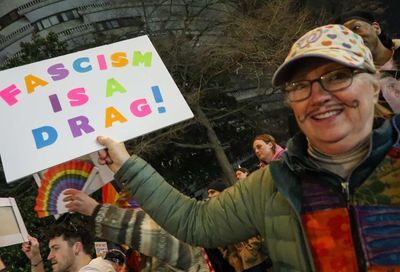Gay Men Continue to Be Sexually Active After 70
Gay and bisexual men over 70, especially those on social media, were more likely to report having sex with multiple partners, than other groups.


A new study from Great Britain finds that the number of sexual partners British adults have will change over the course of their lives, with gay and bisexual men over 70 still enjoying active sex lives as they age.
According to the study — funded by the National Institute for Health and Care Research and published in the Plos One medical journal — gay and bisexual men over 70 were more likely than their straight peers of the same age to have had more than one sexual partner recently.
Those men were likely to continue having sex with multiple partners, while straight men and women became less sexually active.
Women who have sex with women, and other relationship types, were discounted due to small sample sizes.
The study, conducted by researchers at the University of East Anglia, King’s College London, and University College London surveyed more than 5,000 adults during the 2022 mpox outbreak, looking at how sexual activity changes with age, in order to develop scientific models for sexually transmitted infections, reports Sky News.
Researchers surveyed 5,126 British adults from September to October 2022 — including 3,297 from the general population, 1,036 men who have sex with men recruited from Facebook and Instagram, and 831 people responding to adverts on the gay dating app Grindr.
“Before this study, many models about sexually transmitted diseases assumed that everyone over a certain age, say 40 or 65, stopped being sexually active, or at least stopped having multiple partners. Or there might be an assumption that young people have the most sex. But the answer is more nuanced, and it partly depends on people’s sexuality,” lead researcher Dr. Julii Brainard, from UEA’s Norwich Medical School, said in a statement.
According to the findings, most respondents reported either zero or one sexual partner at any age in the three weeks prior to taking the survey.
Sixty-five percent of straight women said they only had one partner in those three weeks up to the age 50, after which the more common response was that women over 50 had no sexual partners.
Meanwhile, half of straight men in all age groups reported having one partner in the three weeks prior to taking the survey, but were more likely to report zero partners as they aged.
Having more than one recent partner was uncommon among the general population, but was more common among those who responded to the survey via social media.
Forty-two percent of men who have sex with men, and 52% of Grindr respondents, had at least two recent male sexual partners, with that number falling as people aged.
From the general sample, 17% of men over 70 who have sex with men reported having more than one sexual partner in the three weeks prior to taking the survey, while that number rose to 25% for those recruited off social media.
By comparison, only 2% of straight people over 70 reported having multiple partners.
“Most people in our survey, regardless of their gender identity or sexuality, had zero or one recent partner at any age,” Brainard noted. “We managed to collect a lot of data from MSM who practiced partner concurrency. About 45% of them sustained partner concurrency from age 27 to 63. Even at age 65-plus, the respondents recruited via social media still tended to have more sexual contact than the general population sample at the same age.
“It would be interesting to see if these findings were replicated if we targeted heterosexuals most likely to practice partner concurrency,” she added.
Researchers are hoping to use the data from the study to develop and tailor safe sex messaging, with the aim of targeting groups who might be at more risk of acquiring sexually transmitted infections.
“Models of disease spread shouldn’t assume that young people are necessarily most at risk or that having multiple partners just stops happening at a strict age threshold,” Brainard said.
Support Metro Weekly’s Journalism
These are challenging times for news organizations. And yet it’s crucial we stay active and provide vital resources and information to both our local readers and the world. So won’t you please take a moment and consider supporting Metro Weekly with a membership? For as little as $5 a month, you can help ensure Metro Weekly magazine and MetroWeekly.com remain free, viable resources as we provide the best, most diverse, culturally-resonant LGBTQ coverage in both the D.C. region and around the world. Memberships come with exclusive perks and discounts, your own personal digital delivery of each week’s magazine (and an archive), access to our Member's Lounge when it launches this fall, and exclusive members-only items like Metro Weekly Membership Mugs and Tote Bags! Check out all our membership levels here and please join us today!























You must be logged in to post a comment.